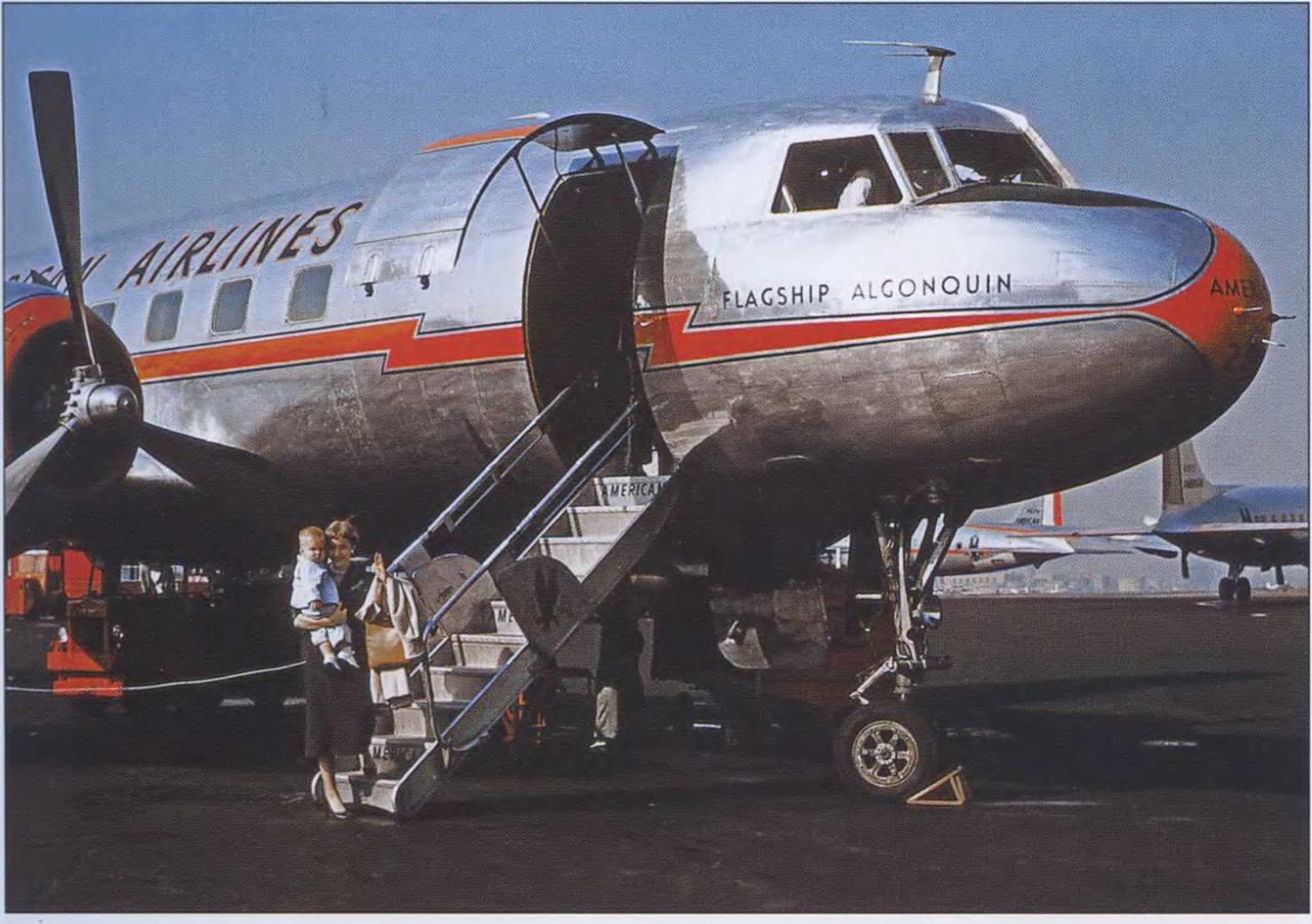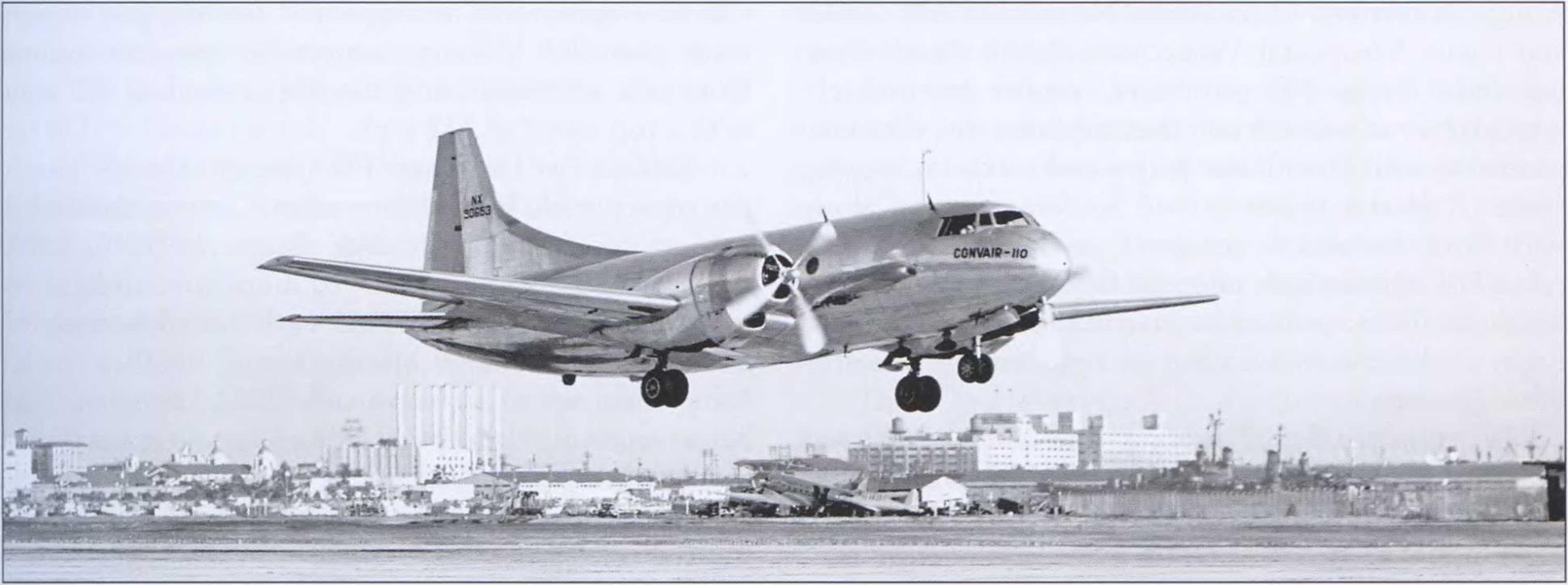Convair 240
While DC-3s had served the airlines well since the mid-1930s, the type was considered slow and flew through more bad weather than it could climb over. Airline managers wanted a new twin-engine, short – to medium-range replacement with added capacity, more speed, and a pressurized cabin.
At San Diego, the Consolidated Vultee Aircraft Corporation, recognized as “Convair,” first flew its prototype Model 110 on July 8, 1946. From this 30-seat variant, the production Model 240 was developed, gaining its name from the two-cngine, 40-passenger configuration. It featured a tricycle landing gear along with the pressurized cabin and added speed desired by the airlines. The 240 prototype first flew on March 16, 1947.
Designed for short-haul, multi-stop route segments, the 240 design offered optional self-contained airstairs and claimed a maximum speed of 300 mph, although 275 mph was a more realistic cruising speed for day-to-day operations. Its list price was $495,000, a far cry from the $10,000 cost of a surplus C-47 after the war.
|
 American Airlines became the Convair-Liner launch customer with a massive order for 100 Model 240s to replace its workhorse DC-3s and provide further route expansion. The Convairs provided short-haul service to destinations such as Roanoke, Virginia, where Flagship Algonquin was headed from New York’s LaGuardia Airport. (Allan Van Wickler)
American Airlines became the Convair-Liner launch customer with a massive order for 100 Model 240s to replace its workhorse DC-3s and provide further route expansion. The Convairs provided short-haul service to destinations such as Roanoke, Virginia, where Flagship Algonquin was headed from New York’s LaGuardia Airport. (Allan Van Wickler)
The type’s production had been assured in 1945 by an American Airlines order for 100 airplanes (later lowered to 75), purchased to replace the carriers DC-3 fleet and provide further route expansion. It also had the advantage of Pratt & Whitney R-2800 engines, common with American s planned four-engine Douglas DC-6 fleet. Convairs began flying for the airline on June 1,1948.
Another 13 airlines bought 240s. The DC-3s they replaced were gradually sold off, many to the newly designated U. S. local service carriers. Convair produced 176 Model 240s, including two built in executive configurations. The success of the program was enriched by production of 390 military variants produced in five different configurations for the U. S. Air Force and U. S. Navy.











